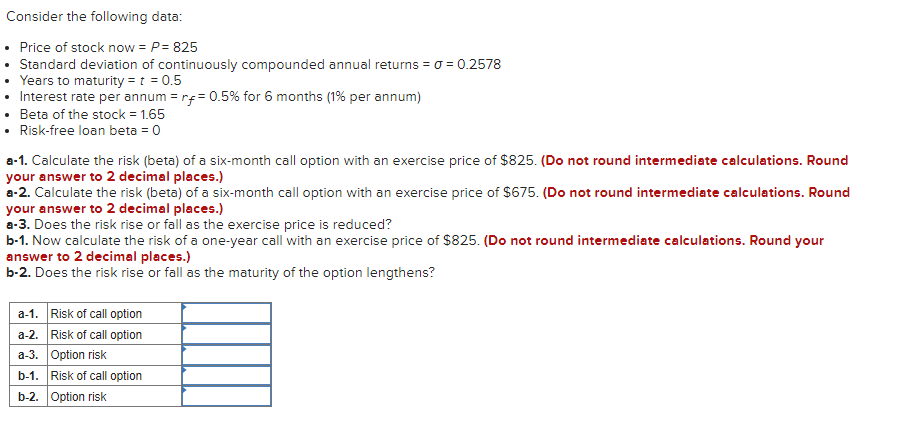Question
Consider the following data: Price of stock now = P = 825 Standard deviation of continuously compounded annual returns = = 0.2578 Years to maturity
Consider the following data:
- Price of stock now = P = 825
- Standard deviation of continuously compounded annual returns = = 0.2578
- Years to maturity = t = 0.5
- Interest rate per annum = rf = 0.5% for 6 months (1% per annum)
- Beta of the stock = 1.65
- Risk-free loan beta = 0
a-1. Calculate the risk (beta) of a six-month call option with an exercise price of $825. (Do not round intermediate calculations. Round your answer to 2 decimal places.) a-2. Calculate the risk (beta) of a six-month call option with an exercise price of $675. (Do not round intermediate calculations. Round your answer to 2 decimal places.) a-3. Does the risk rise or fall as the exercise price is reduced? b-1. Now calculate the risk of a one-year call with an exercise price of $825. (Do not round intermediate calculations. Round your answer to 2 decimal places.) b-2. Does the risk rise or fall as the maturity of the option lengthens?
Step by Step Solution
There are 3 Steps involved in it
Step: 1

Get Instant Access to Expert-Tailored Solutions
See step-by-step solutions with expert insights and AI powered tools for academic success
Step: 2

Step: 3

Ace Your Homework with AI
Get the answers you need in no time with our AI-driven, step-by-step assistance
Get Started


